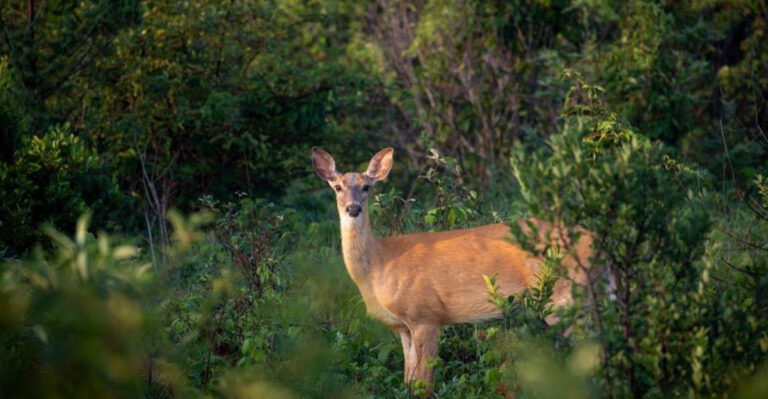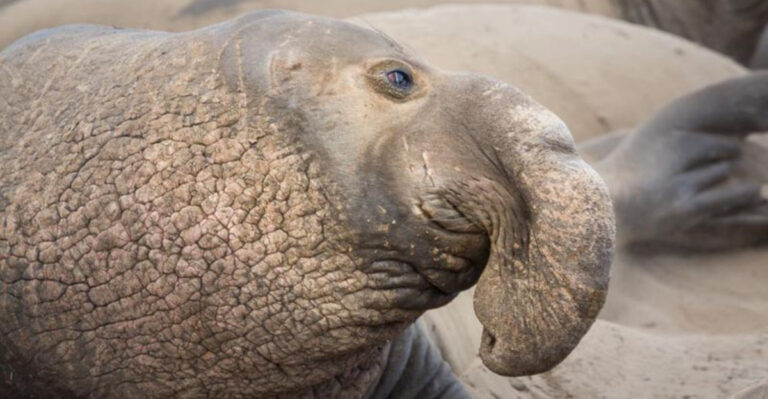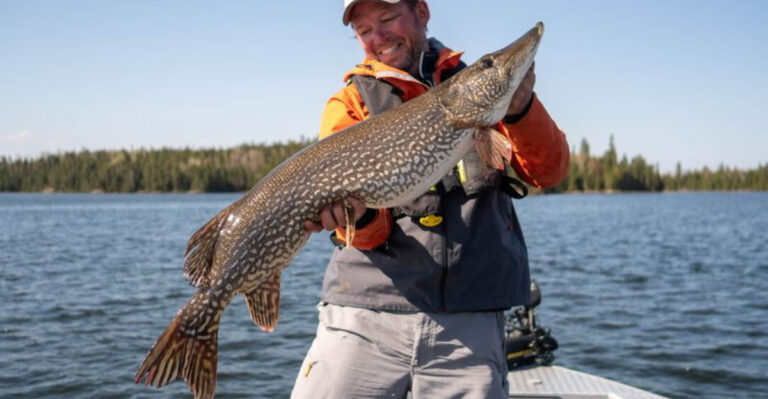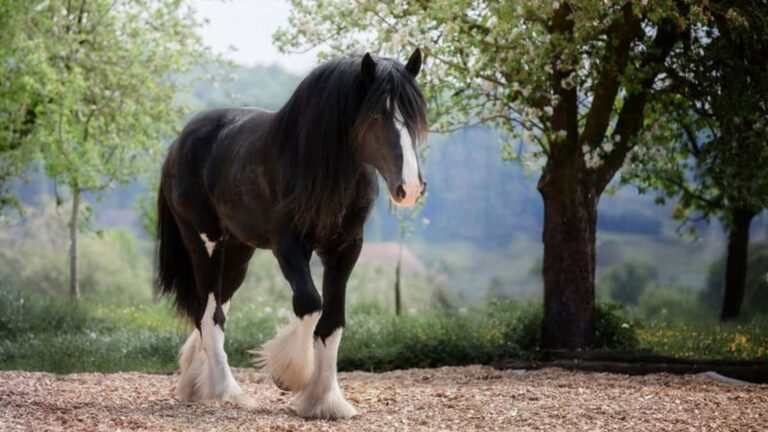These Are The Largest Rattlesnakes Ever Spotted In Each State
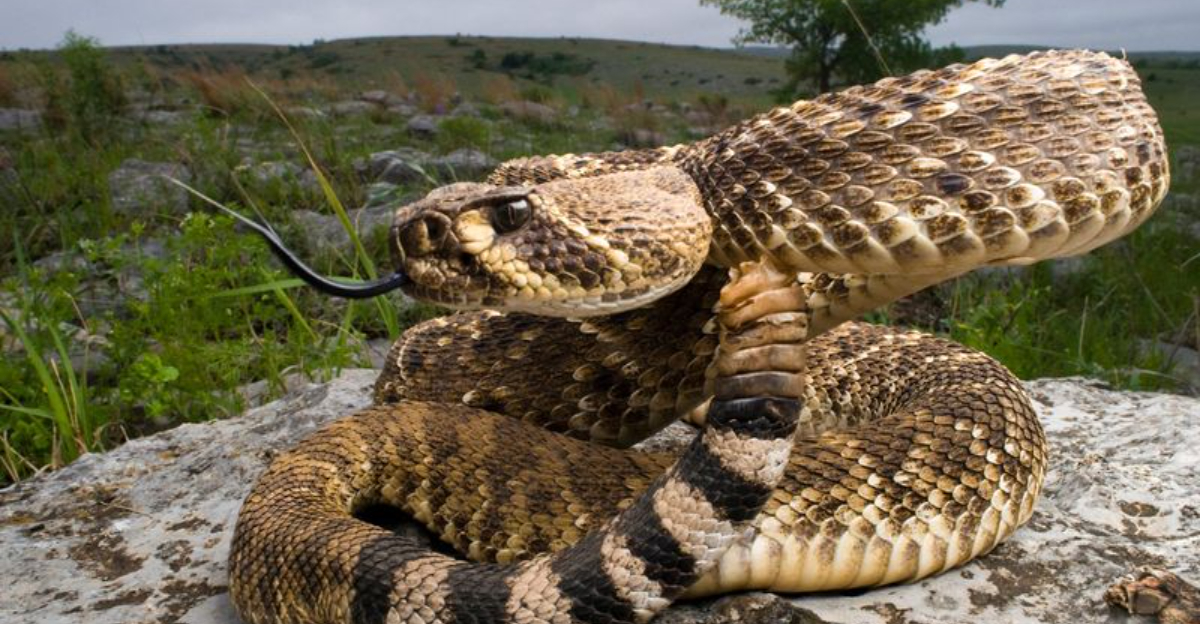
The United States is home to a diverse array of rattlesnakes, each with its own unique attributes and characteristics. These fascinating creatures have adapted to various environments across the country, from the deserts of the Southwest to the forests of the Southeast.
In this article, we will uncover the largest rattlesnake species found in each state, offering a glimpse into their habitats, behaviors, and intriguing features. Whether you’re a herpetology enthusiast or simply curious about these slithering wonders, join us on this captivating journey across the nation.
1. Alabama – Eastern Diamondback Rattlesnake
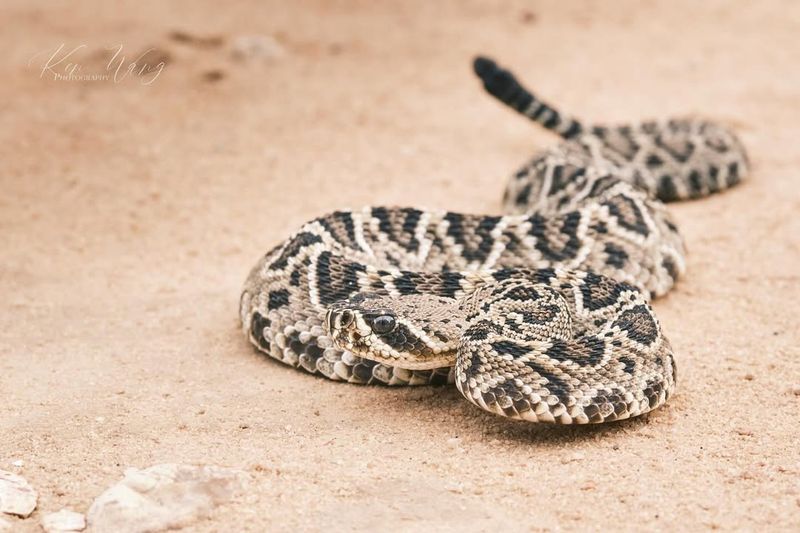
In Alabama, the formidable Eastern Diamondback Rattlesnake reigns as the largest rattlesnake. Known for its striking diamond patterns, this species can reach impressive lengths. Its habitat spans the lush forests and coastal plains of Alabama, where it thrives in warm, humid conditions.
The Eastern Diamondback is not only remarkable for its size but also for its potent venom, making it a creature both feared and respected. This rattlesnake’s diet primarily consists of small mammals, which it skillfully hunts using its heat-sensing pits. A true marvel of nature, the Eastern Diamondback is an iconic symbol of Alabama’s wildlife.
2. Arizona – Western Diamondback Rattlesnake
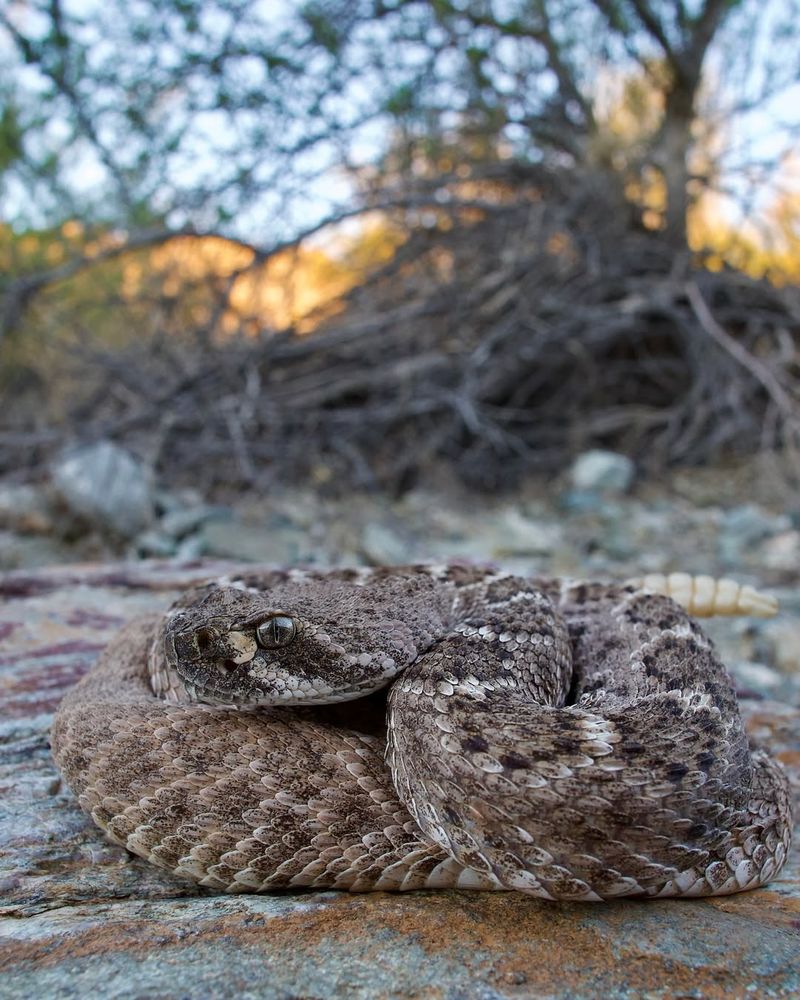
Arizona is home to the Western Diamondback Rattlesnake, a prominent and robust species known for its adaptability to desert environments. This rattlesnake is a common sight in the arid landscapes of Arizona, where it navigates the rugged terrain with ease.
Its distinctive diamond pattern and rattling tail serve as a warning to potential threats. In Arizona’s harsh desert climate, the Western Diamondback thrives, preying on rodents and birds. An essential part of the ecosystem, this rattlesnake plays a crucial role in controlling pest populations. Its presence is both respected and cautiously heeded by those who share its habitat.
3. Arkansas – Timber Rattlesnake
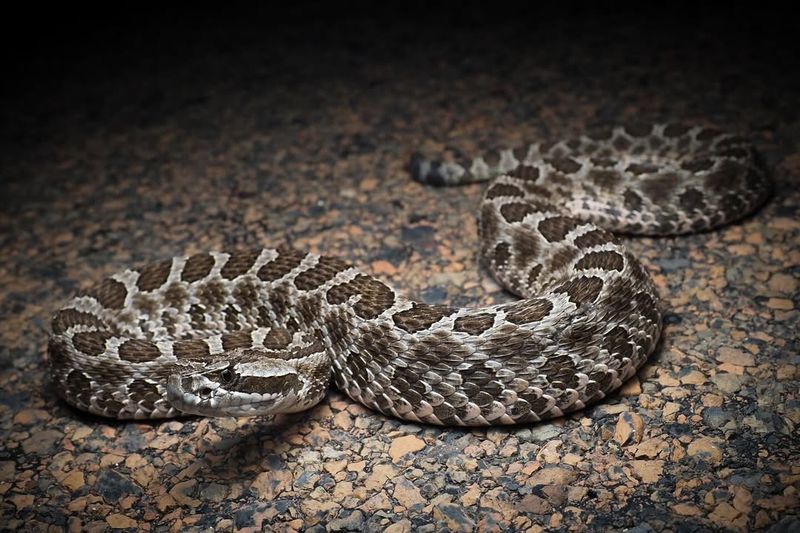
The Timber Rattlesnake is the largest rattlesnake in Arkansas, residing mainly in the wooded areas of the state. This species is well-adapted to the dense forests and rocky terrain, where it blends seamlessly with its surroundings. Known for its muted coloration, the Timber Rattlesnake is both elusive and fascinating. Its venomous bite is reserved for hunting, primarily targeting small mammals and birds.
In Arkansas, it contributes to the ecological balance by managing the populations of its prey. This rattlesnake’s secretive nature and efficient hunting skills make it a remarkable inhabitant of the state’s natural landscapes.
4. California – Western Diamondback Rattlesnake

In California, the Western Diamondback Rattlesnake is recognized as one of the largest rattlesnake species. Found in various habitats, from arid deserts to coastal chaparrals, this snake is highly adaptable. Its distinctive rattling sound is a common alert to hikers and outdoor enthusiasts.
With a diet consisting mainly of small animals, the Western Diamondback is an adept predator. Its presence in California’s diverse ecosystems highlights its ecological importance. Although encounters can be unsettling, this rattlesnake is a vital part of the state’s natural heritage, contributing to the intricate balance of its wildlife communities.
5. Colorado – Prairie Rattlesnake
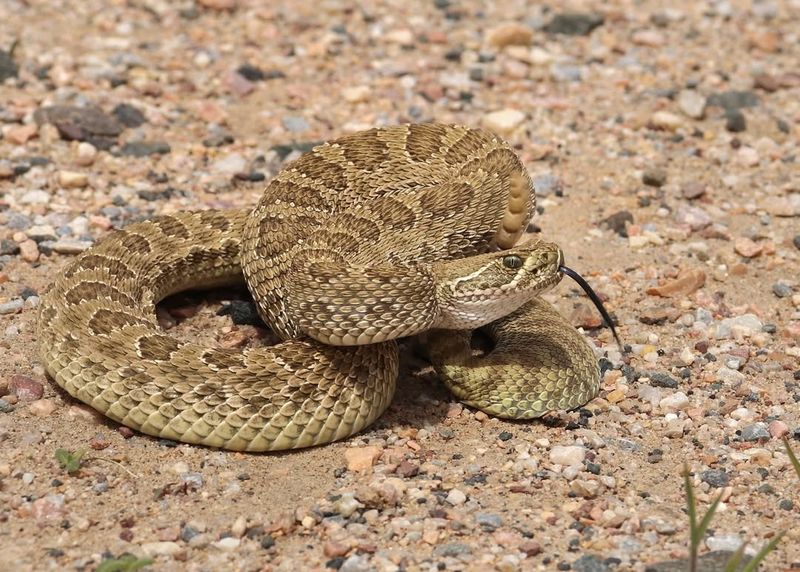
In the expansive grasslands of Colorado, the Prairie Rattlesnake holds the title of the largest rattlesnake. This species is well-suited to the open plains and diverse elevations of the state. With its mottled brown and green pattern, the Prairie Rattlesnake is well-camouflaged against the dry grasses.
It primarily feeds on small mammals and birds, playing a crucial role in controlling rodent populations. In Colorado, this rattlesnake is often encountered by those exploring the great outdoors. While its venom is potent, the Prairie Rattlesnake is generally reclusive and avoids human contact, making it a respected yet cautious resident of Colorado.
6. Connecticut – Timber Rattlesnake
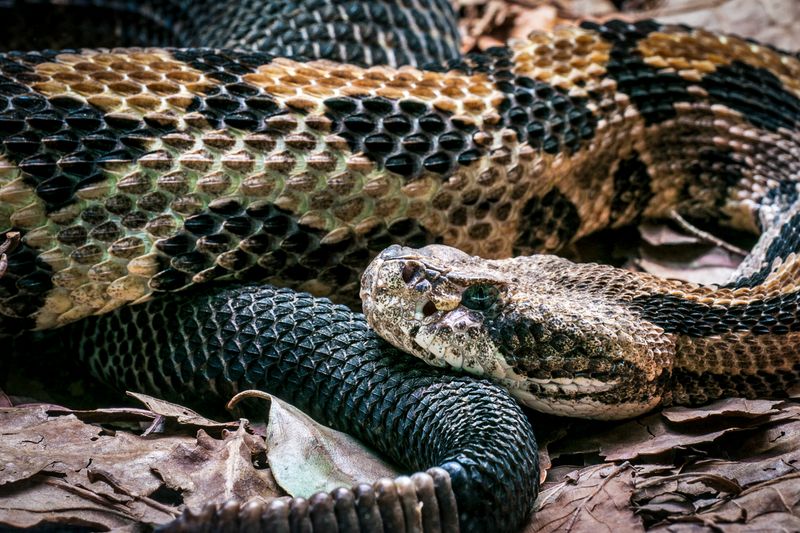
Connecticut’s largest rattlesnake is the Timber Rattlesnake, a species that resides in the state’s forested regions. Known for its subtle coloration and distinctive rattle, this snake is an adept hunter. It thrives in the rocky hills and deciduous forests of Connecticut, where it preys on small mammals.
Despite its venomous nature, the Timber Rattlesnake is a shy and elusive creature, often choosing to remain hidden from human eyes. Its presence in Connecticut’s ecosystem helps maintain the balance of prey populations, highlighting its ecological importance. This rattlesnake’s quiet existence adds a touch of mystery to the state’s wilderness.
7. Delaware – Timber Rattlesnake
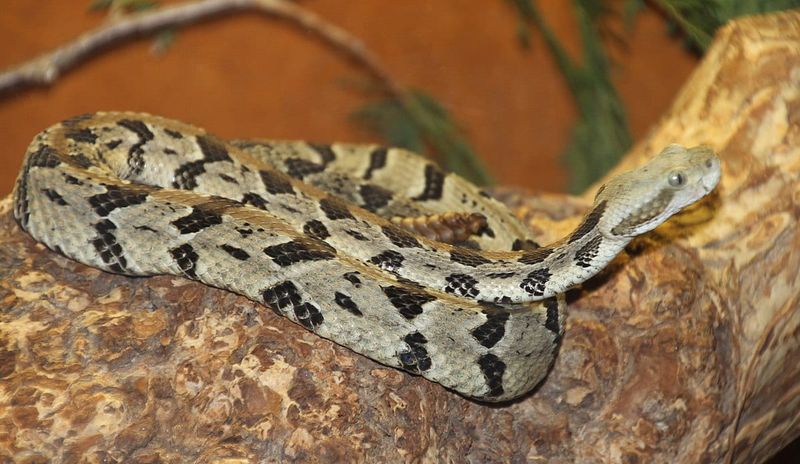
In Delaware, the Timber Rattlesnake is the largest rattlesnake species, occupying the state’s limited forested areas. This snake is known for its excellent camouflage and secretive habits, making it a rare sight. The Timber Rattlesnake’s muted colors allow it to blend seamlessly into the surroundings, aiding in its stealthy hunting techniques.
Its diet consists mainly of small rodents, which it helps control in the local ecosystem. While encounters with humans are uncommon, the presence of the Timber Rattlesnake in Delaware underscores the state’s natural diversity. This elusive reptile is a true testament to the hidden wonders of Delaware’s wilderness.
8. Florida – Eastern Diamondback Rattlesnake
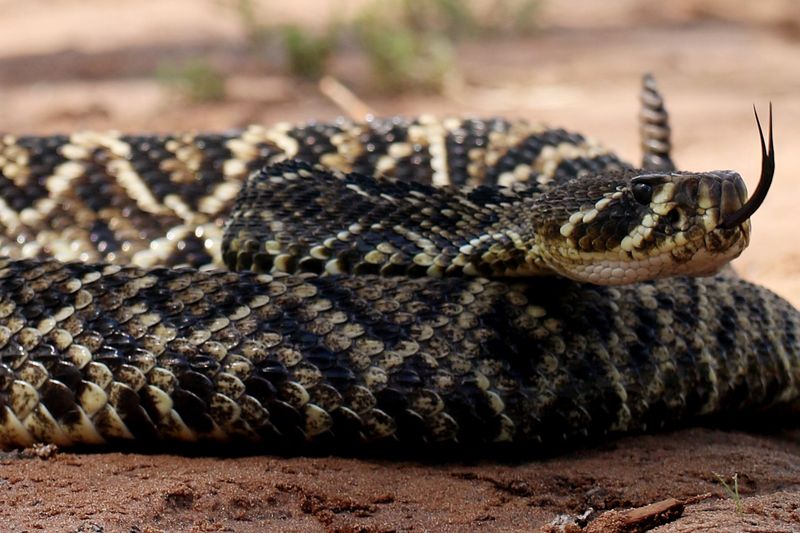
Florida is home to the Eastern Diamondback Rattlesnake, a formidable species known for its size and striking appearance. Found primarily in the state’s sandy pine flatwoods and coastal dunes, this rattlesnake is an apex predator. It plays a vital role in controlling the populations of small mammals and birds.
The Eastern Diamondback’s distinctive diamond patterns and powerful venom are both signs of its evolutionary prowess. In Florida’s diverse ecosystems, this rattlesnake is both revered and respected. Its presence is a reminder of the intricate web of life that thrives in the Sunshine State, contributing to its ecological richness.
9. Georgia – Eastern Diamondback Rattlesnake
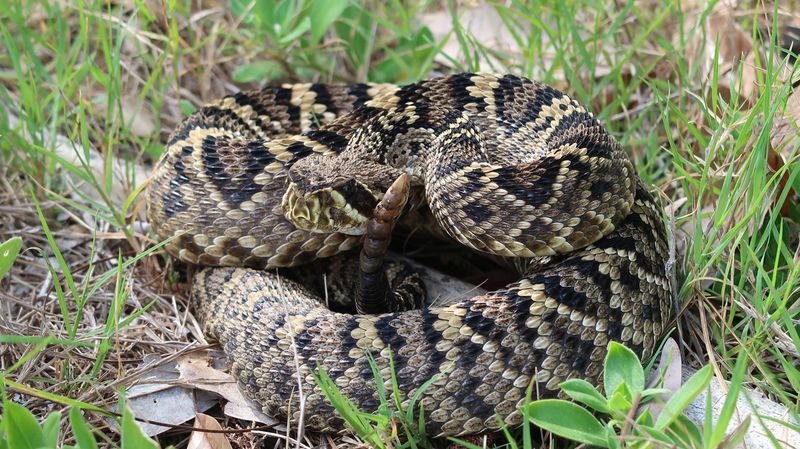
In Georgia, the Eastern Diamondback Rattlesnake is recognized as the largest species, inhabiting the state’s pine forests and coastal regions. This rattlesnake’s distinctive diamond pattern and imposing size make it a formidable presence in Georgia’s wildlife. It primarily preys on small animals, skillfully hunting with its heat-sensing abilities.
The Eastern Diamondback is an essential part of Georgia’s ecosystem, regulating prey populations and contributing to biodiversity. Although encounters with humans are rare, its presence is a symbol of the state’s wild heritage. This rattlesnake’s legacy as a top predator is a testament to nature’s intricate balance.
10. Idaho – Western Rattlesnake
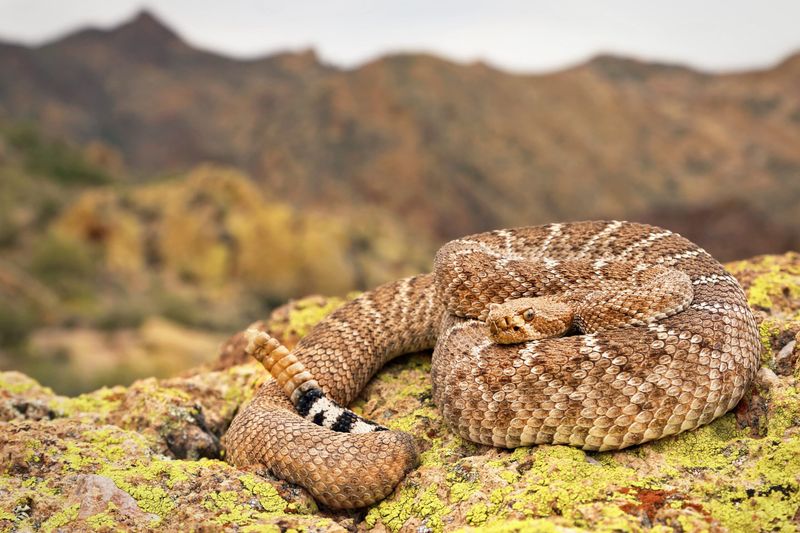
In the rugged landscapes of Idaho, the Western Rattlesnake is the largest species, thriving in the state’s diverse habitats. This rattlesnake is adept at navigating rocky terrains and open grasslands, where it preys on small mammals and birds.
Its mottled brown and green coloration provides excellent camouflage against the Idaho landscape. Known for its potent venom, the Western Rattlesnake is both respected and feared. Despite its fearsome reputation, this species plays a crucial role in maintaining ecological balance. Its presence is a testament to the adaptability and resilience of Idaho’s wildlife, contributing to the state’s natural diversity.
11. Illinois – Eastern Massasauga Rattlesnake
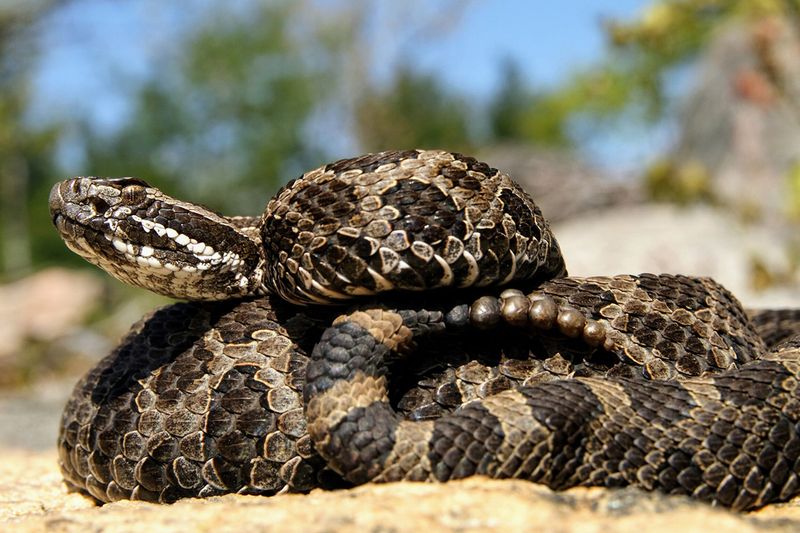
Illinois is home to the Eastern Massasauga Rattlesnake, the state’s largest rattlesnake species. This elusive snake resides in the wetlands and marshes, where its cryptic coloration offers perfect camouflage. The Eastern Massasauga is a small yet potent predator, feeding on amphibians and rodents.
Despite its venomous bite, it is a timid species that avoids confrontation. In Illinois, the presence of this rattlesnake is a sign of a healthy wetland ecosystem. Conservation efforts aim to protect its habitat, ensuring the Eastern Massasauga remains a part of the state’s natural heritage. This rattlesnake’s subtle presence adds mystery to Illinois’s wildlife.
12. Indiana – Eastern Massasauga Rattlesnake
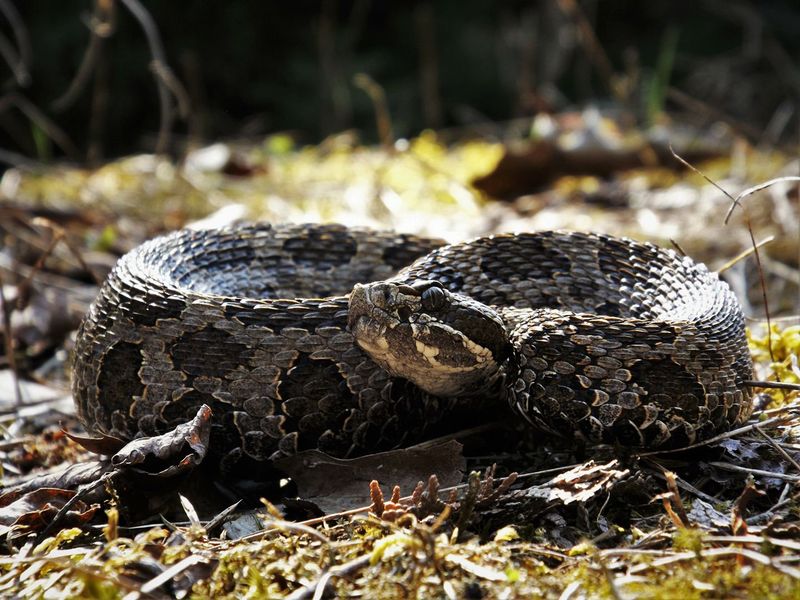
The Eastern Massasauga Rattlesnake is Indiana’s largest rattlesnake, predominantly found in the state’s marshy environments. This species is well-camouflaged, with a distinctive pattern that blends into the wetlands’ dense vegetation. It primarily feeds on small mammals, contributing to the balance of the ecosystem.
The Eastern Massasauga is a fascinating yet elusive snake, often remaining hidden from human eyes. Its presence in Indiana is a reminder of the state’s rich biodiversity and the importance of wetland conservation. Protecting its habitat ensures the continued survival of this unique rattlesnake, highlighting its ecological significance.
13. Iowa – Timber Rattlesnake
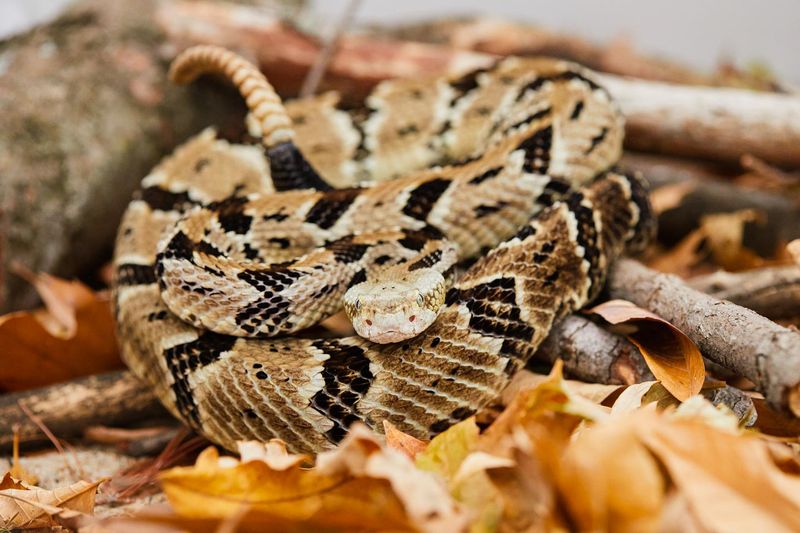
In Iowa, the Timber Rattlesnake is the largest rattlesnake species, residing primarily in the state’s deciduous forests. This rattlesnake is well-adapted to its environment, utilizing its muted coloration to blend into the forest floor.
The Timber Rattlesnake is a skilled predator, preying on small mammals and birds. Its presence in Iowa’s forests is a testament to the state’s biodiversity, contributing to the ecological balance by regulating prey populations. While encounters are rare, the Timber Rattlesnake is a symbol of the wild, untamed beauty of Iowa’s natural landscapes, offering a glimpse into the hidden wonders of the forest.
14. Kansas – Western Massasauga Rattlesnake
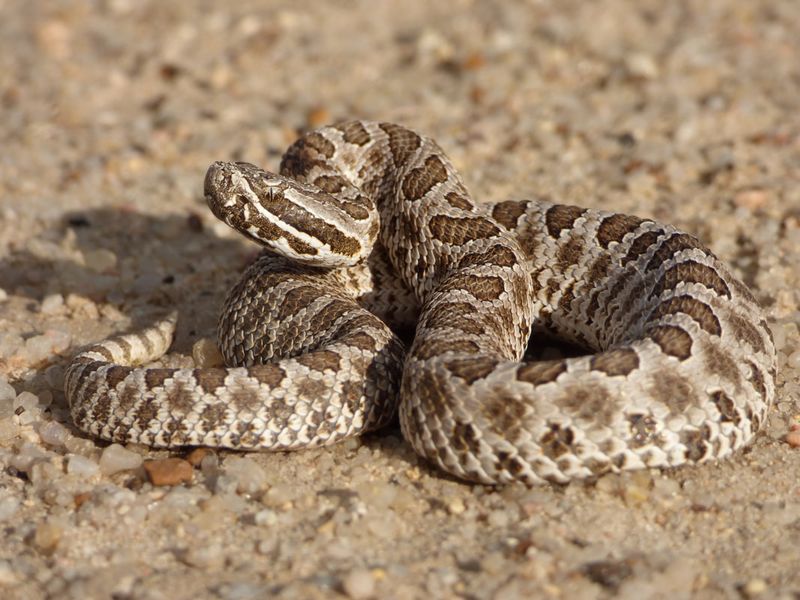
Kansas is home to the Western Massasauga Rattlesnake, the state’s largest rattlesnake, inhabiting the open prairies and grasslands. This small yet formidable species is well-suited to its environment, blending seamlessly with the tall grasses. The Western Massasauga’s diet consists mainly of small rodents, which it helps control in the ecosystem.
Known for its reclusive nature, this rattlesnake is rarely seen by humans, preferring to remain hidden in the grasslands. Its presence in Kansas highlights the diversity of the state’s wildlife, playing a crucial role in maintaining ecological balance. This rattlesnake’s subtle presence adds intrigue to the Kansas prairies.
15. Kentucky – Timber Rattlesnake
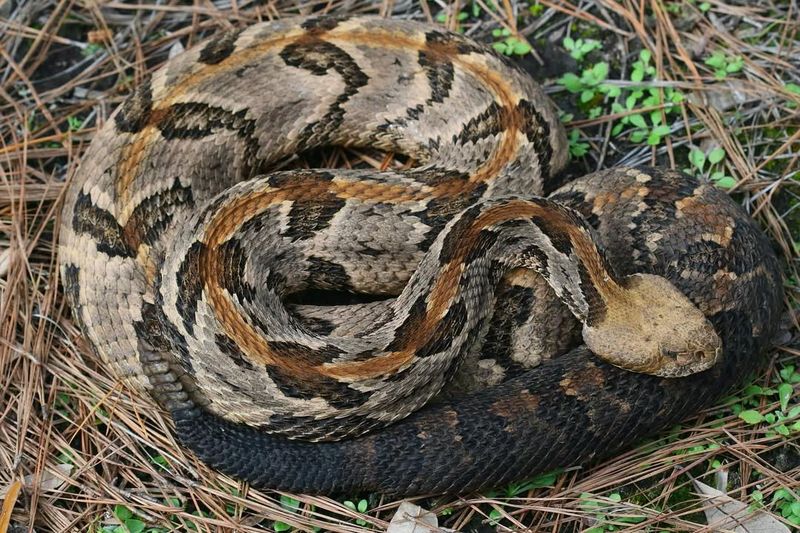
The Timber Rattlesnake is Kentucky’s largest rattlesnake, thriving in the Appalachian foothills and forested regions. This species is known for its adaptability to various terrains, from rocky outcrops to dense forests. With its muted coloration, the Timber Rattlesnake blends seamlessly into its surroundings, making it an elusive presence.
In Kentucky, this rattlesnake is an apex predator, preying on small mammals and birds. Its role in the ecosystem is vital, helping to regulate prey populations. The Timber Rattlesnake’s presence in Kentucky is a reminder of the state’s rich natural heritage, offering a glimpse into the wild wonders of the region.
16. Louisiana – Eastern Diamondback Rattlesnake
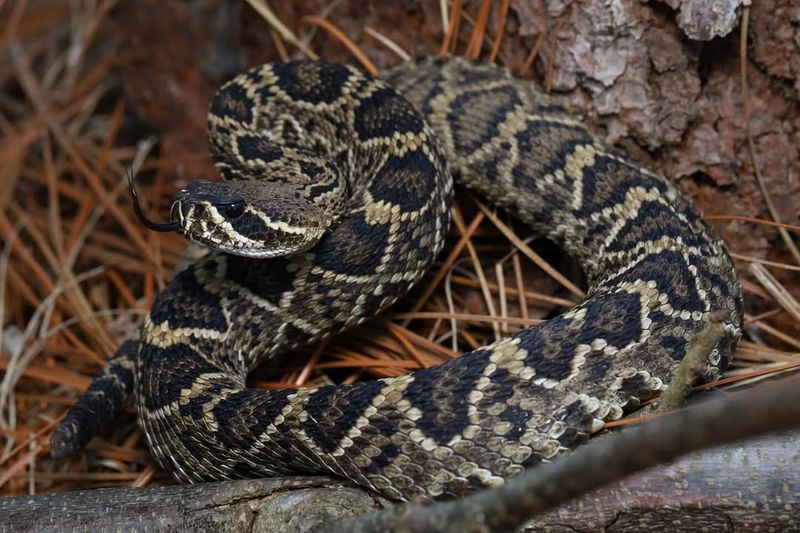
The Eastern Diamondback Rattlesnake is the largest rattlesnake in Louisiana, residing primarily in the state’s swamps and coastal areas. Known for its impressive size and distinctive diamond patterns, this rattlesnake is a formidable predator. Its habitat includes the cypress swamps and marshy lowlands, where it preys on small mammals and birds.
The Eastern Diamondback plays a crucial role in controlling prey populations, contributing to the ecological balance of Louisiana’s diverse ecosystems. While encounters with humans are rare, its presence is a testament to the wild beauty of the state’s natural landscapes, adding to the allure of Louisiana’s wildlife.
17. Maryland – Timber Rattlesnake
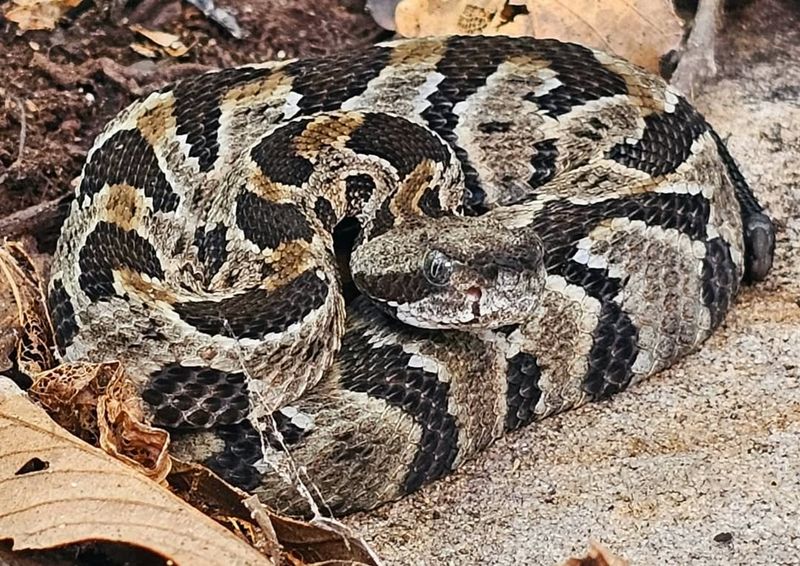
In Maryland, the Timber Rattlesnake is the largest rattlesnake species, residing in the state’s forested regions. This elusive snake is well-camouflaged, blending seamlessly with the forest floor. Its presence is vital for controlling prey populations, mainly small mammals and birds.
The Timber Rattlesnake’s shy nature often keeps it hidden from human eyes, adding an element of mystery to Maryland’s wilderness. This rattlesnake is a symbol of the state’s rich biodiversity, contributing to the ecological balance of the region. Encountering this secretive creature is a rare and fascinating experience, offering a glimpse into the hidden world of Maryland’s wildlife.
18. Massachusetts – Timber Rattlesnake
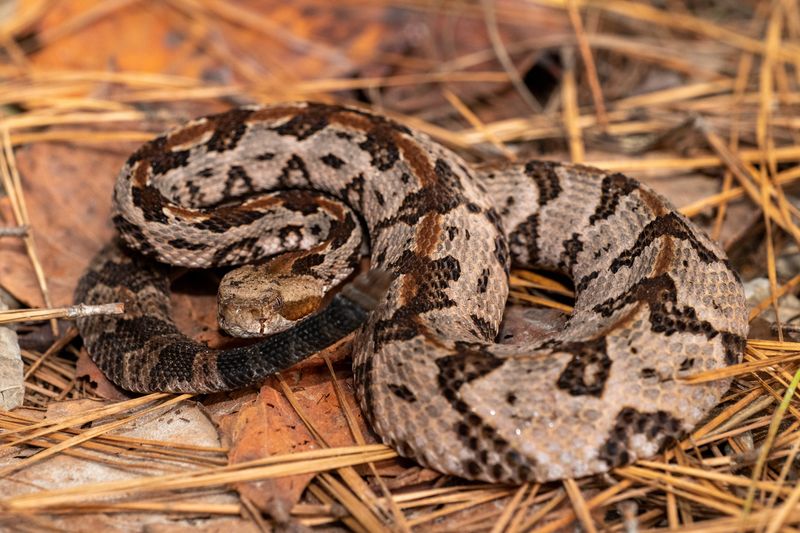
Massachusetts is home to the Timber Rattlesnake, the state’s largest rattlesnake species, inhabiting the rocky hills and deciduous forests. This snake’s muted colors and distinctive rattle make it an intriguing yet elusive presence. The Timber Rattlesnake is a skilled hunter, preying on small rodents and birds. Its role in the ecosystem is crucial, helping to regulate prey populations.
While encounters are rare, this rattlesnake is a symbol of Massachusetts’ wild beauty, contributing to the diversity of the state’s wildlife. The presence of the Timber Rattlesnake adds a touch of mystery to the state’s natural landscapes, inviting exploration and discovery.
19. Michigan – Eastern Massasauga Rattlesnake
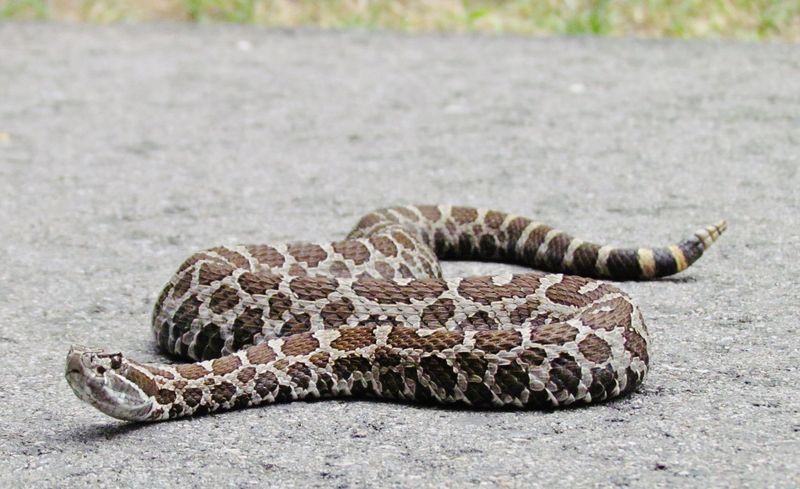
The Eastern Massasauga Rattlesnake is Michigan’s largest rattlesnake, primarily found in the state’s wetlands and marshes. This small yet potent species is well-camouflaged, blending into the dense vegetation of its habitat. The Eastern Massasauga primarily feeds on small rodents, playing a vital role in controlling these populations.
Despite its venomous bite, this rattlesnake is shy and avoids human contact. The presence of the Eastern Massasauga in Michigan is a sign of a healthy wetland ecosystem, emphasizing the importance of conservation efforts. This elusive snake adds an intriguing element to Michigan’s diverse wildlife, highlighting the state’s natural beauty.
20. Minnesota – Timber Rattlesnake
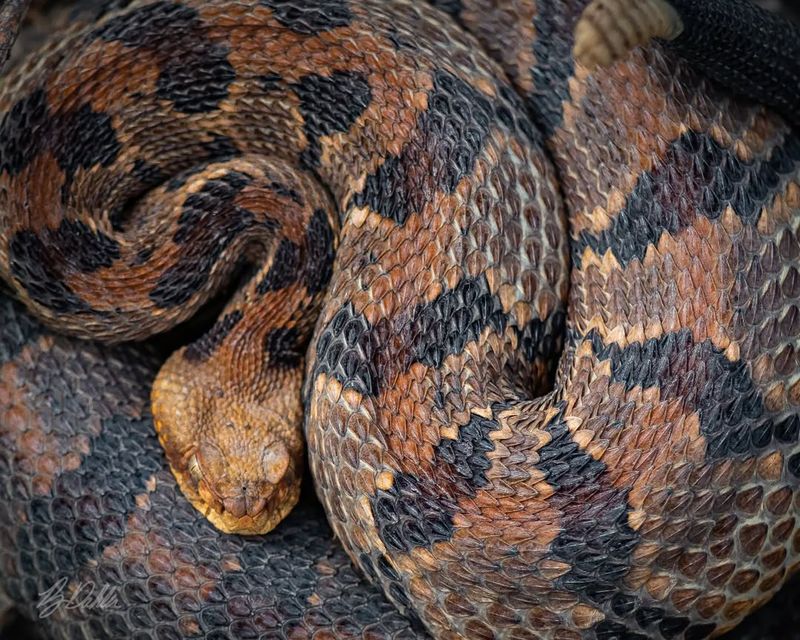
In Minnesota, the Timber Rattlesnake is the largest species, residing mainly in the bluffs and rocky areas along the Mississippi River. This rattlesnake is an expert at blending into its surroundings, using its muted coloration to avoid detection. Its diet consists of small mammals and birds, which it hunts with precision.
The Timber Rattlesnake’s presence in Minnesota is a testament to the state’s rich biodiversity, contributing to the ecological balance of the region. While encounters are rare, this rattlesnake is a symbol of the state’s wild landscapes, offering a glimpse into the hidden beauty and complexity of Minnesota’s natural world.
21. Mississippi – Eastern Diamondback Rattlesnake
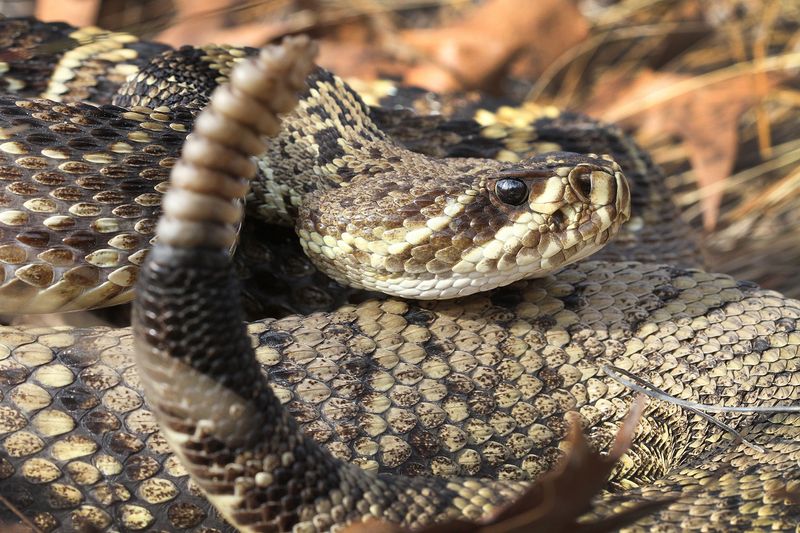
The Eastern Diamondback Rattlesnake is the largest rattlesnake in Mississippi, inhabiting the state’s pine forests and coastal plains. Known for its impressive size and distinctive diamond patterns, this rattlesnake is a formidable predator. Its habitat includes sandy soils and pine-covered areas, where it preys on small mammals and birds.
The Eastern Diamondback plays a crucial role in controlling prey populations, contributing to the ecological balance of Mississippi’s diverse ecosystems. While encounters with humans are rare, its presence is a testament to the wild beauty of the state’s natural landscapes, adding to the allure of Mississippi’s wildlife.
22. Missouri – Timber Rattlesnake
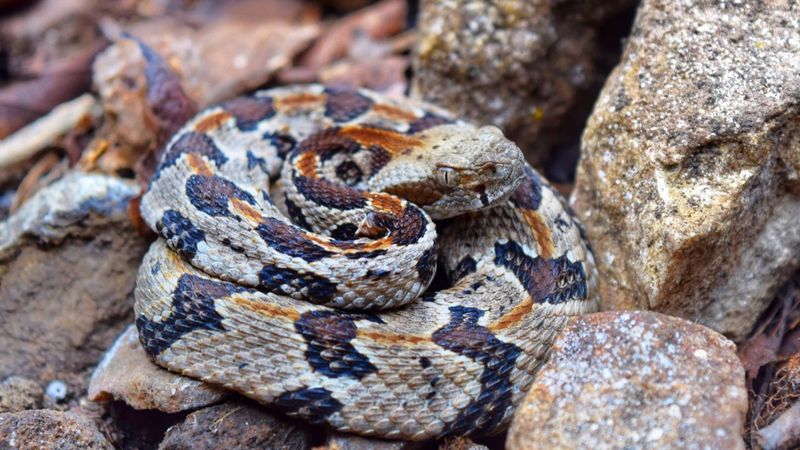
In Missouri, the Timber Rattlesnake is the largest rattlesnake species, residing primarily in the Ozark Mountains and forested areas. This species is well-adapted to the rocky terrain and dense forests, where it blends seamlessly with its surroundings. The Timber Rattlesnake is a skilled predator, preying on small mammals and birds.
Its presence in Missouri is a testament to the state’s rich biodiversity, contributing to the ecological balance by regulating prey populations. While encounters are rare, this rattlesnake is a symbol of the wild, untamed beauty of Missouri’s natural landscapes, offering a glimpse into the hidden wonders of the region.
23. Montana – Prairie Rattlesnake
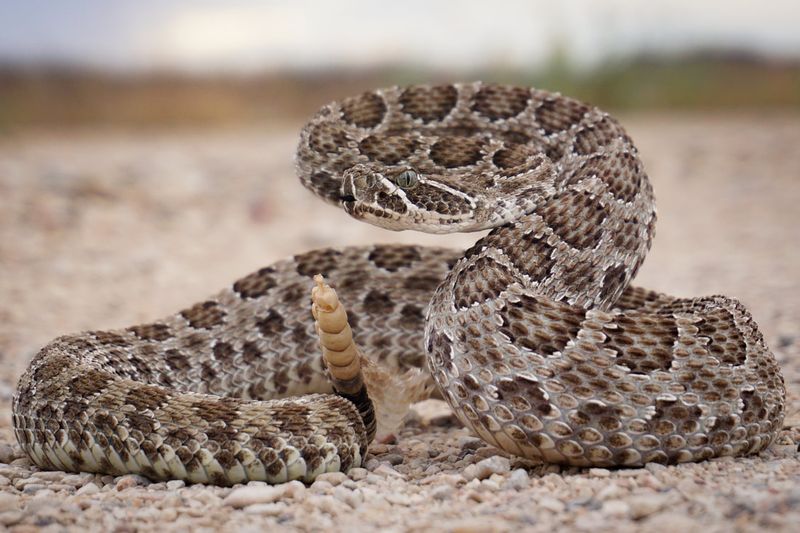
The Prairie Rattlesnake is the largest rattlesnake species in Montana, thriving in the state’s expansive grasslands and open plains. This species is well-suited to the wide-open spaces of Montana, where it preys on small mammals and birds. The Prairie Rattlesnake’s mottled brown and green coloration provides excellent camouflage against the dry grasses.
In Montana, this rattlesnake plays a crucial role in controlling rodent populations, contributing to the ecological balance of the region. While its venom is potent, the Prairie Rattlesnake is generally reclusive and avoids human contact, making it a respected yet cautious resident of Montana’s natural landscapes.
24. Nebraska – Prairie Rattlesnake
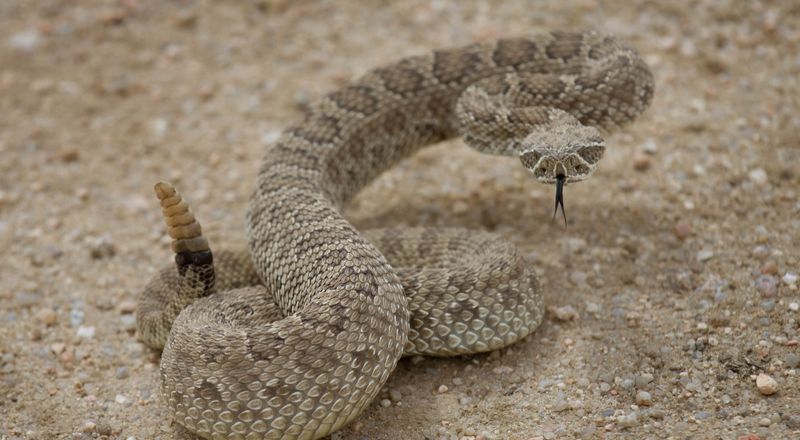
In Nebraska, the Prairie Rattlesnake is the largest species, residing primarily in the state’s prairies and grasslands. This rattlesnake is well-adapted to its environment, using its mottled coloration to blend into the tall grasses. The Prairie Rattlesnake primarily feeds on small mammals, playing a crucial role in controlling these populations.
Its presence in Nebraska highlights the diversity of the state’s wildlife, contributing to the ecological balance of the region. While encounters are rare, the Prairie Rattlesnake is a symbol of the wild beauty of Nebraska’s natural landscapes, offering a glimpse into the hidden wonders of the prairies.
25. Nevada – Western Diamondback Rattlesnake
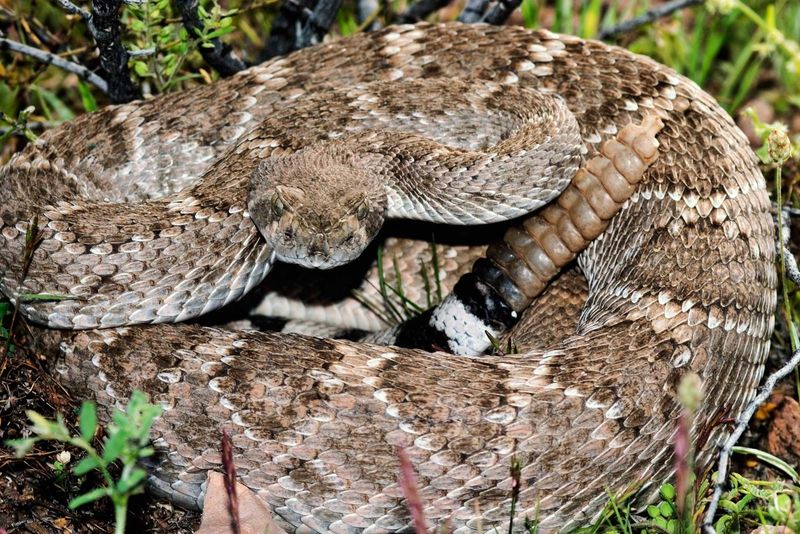
The Western Diamondback Rattlesnake is Nevada’s largest rattlesnake species, thriving in the state’s arid deserts and rocky terrains. Known for its impressive size and distinctive diamond patterns, this rattlesnake is a formidable presence in Nevada’s wildlife. It preys on small mammals and birds, using its heat-sensing pits to locate its prey.
The Western Diamondback’s adaptability to harsh desert conditions is a testament to its evolutionary success. Its presence in Nevada is a reminder of the state’s diverse ecosystems and the intricate balance of nature. Although encounters can be unsettling, this rattlesnake is a vital part of Nevada’s natural heritage.
26. New Hampshire – Timber Rattlesnake
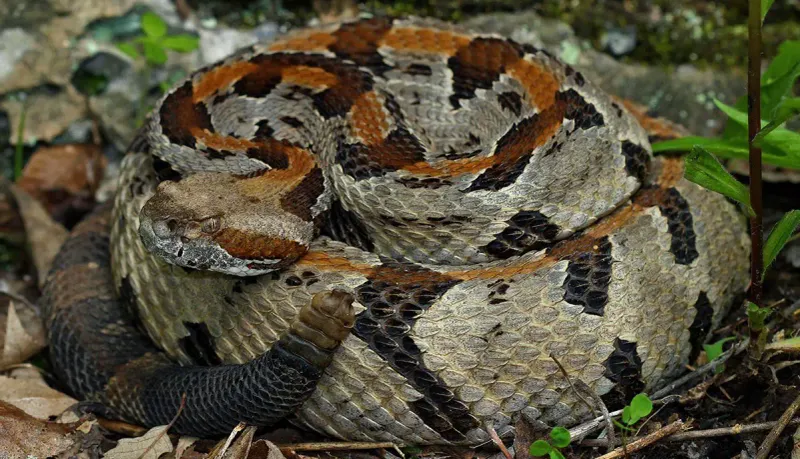
In New Hampshire, the Timber Rattlesnake is the largest species, found primarily in the state’s forested areas and rocky hills. This rattlesnake is well-adapted to its environment, using its muted coloration to blend into the forest floor.
The Timber Rattlesnake is a skilled predator, preying on small mammals and birds. Its presence in New Hampshire is a testament to the state’s rich biodiversity, contributing to the ecological balance by regulating prey populations. While encounters are rare, this rattlesnake is a symbol of the wild beauty of New Hampshire’s natural landscapes, offering a glimpse into the hidden wonders of the region.
27. New Jersey – Timber Rattlesnake
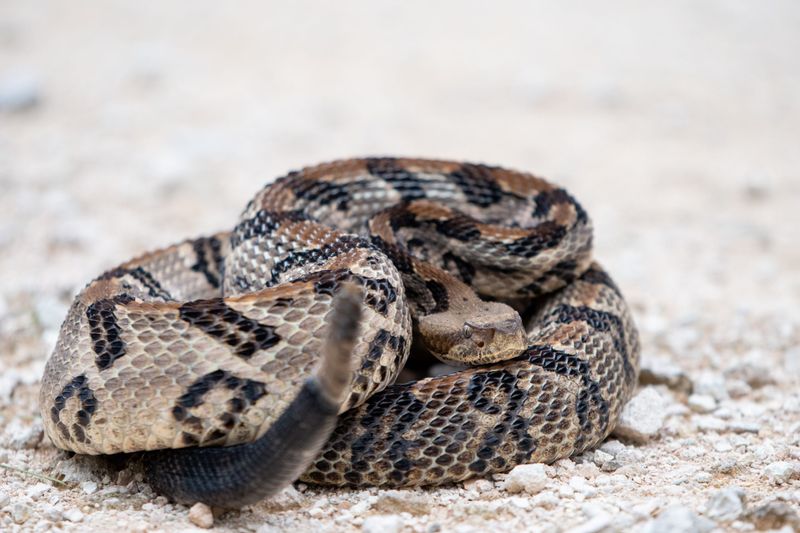
The Timber Rattlesnake is New Jersey’s largest rattlesnake species, residing primarily in the state’s pine barrens and forested areas. This species is known for its adaptability to various terrains, from sandy soils to dense forests. With its muted coloration, the Timber Rattlesnake blends seamlessly into its surroundings, making it an elusive presence.
In New Jersey, this rattlesnake is an apex predator, preying on small mammals and birds. Its role in the ecosystem is vital, helping to regulate prey populations. The Timber Rattlesnake’s presence in New Jersey is a reminder of the state’s rich natural heritage, offering a glimpse into the wild wonders of the region.
28. New Mexico – Western Diamondback Rattlesnake
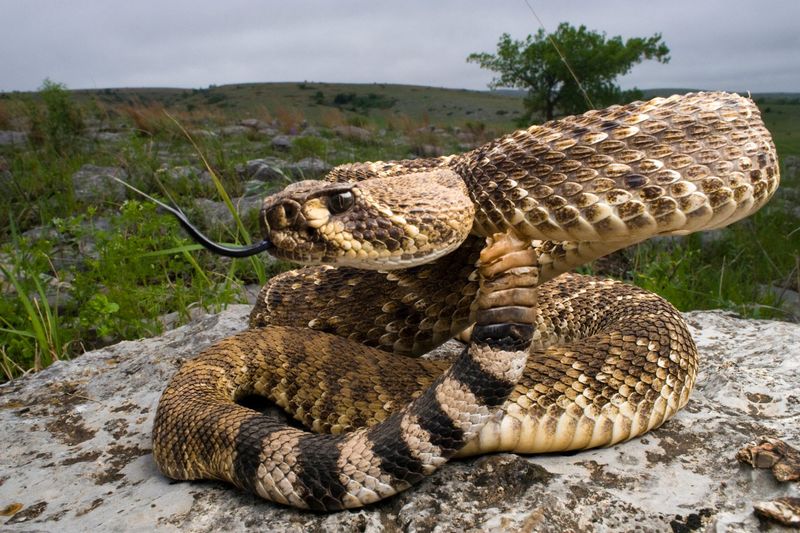
New Mexico is home to the Western Diamondback Rattlesnake, the state’s largest rattlesnake species, thriving in the arid deserts and rocky terrains. Known for its impressive size and distinctive diamond patterns, this rattlesnake is a formidable predator. It preys on small mammals and birds, using its heat-sensing pits to locate its prey.
The Western Diamondback’s adaptability to harsh desert conditions is a testament to its evolutionary success. Its presence in New Mexico is a reminder of the state’s diverse ecosystems and the intricate balance of nature. Although encounters can be unsettling, this rattlesnake is a vital part of New Mexico’s natural heritage.
29. New York – Timber Rattlesnake
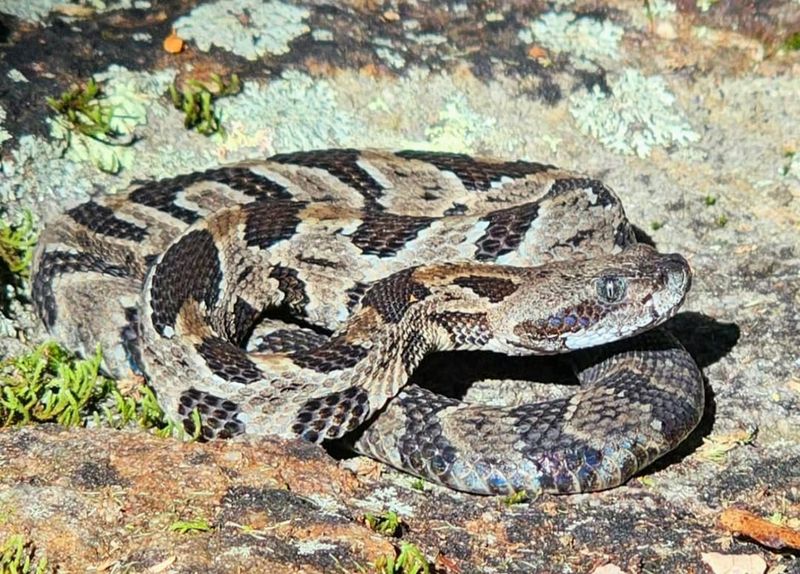
In New York, the Timber Rattlesnake is the largest species, residing primarily in the Catskill Mountains and forested areas. This rattlesnake is well-adapted to its environment, using its muted coloration to blend into the rocky terrain.
The Timber Rattlesnake is a skilled predator, preying on small mammals and birds. Its presence in New York is a testament to the state’s rich biodiversity, contributing to the ecological balance by regulating prey populations. While encounters are rare, this rattlesnake is a symbol of the wild beauty of New York’s natural landscapes, offering a glimpse into the hidden wonders of the region.
30. North Carolina – Eastern Diamondback Rattlesnake
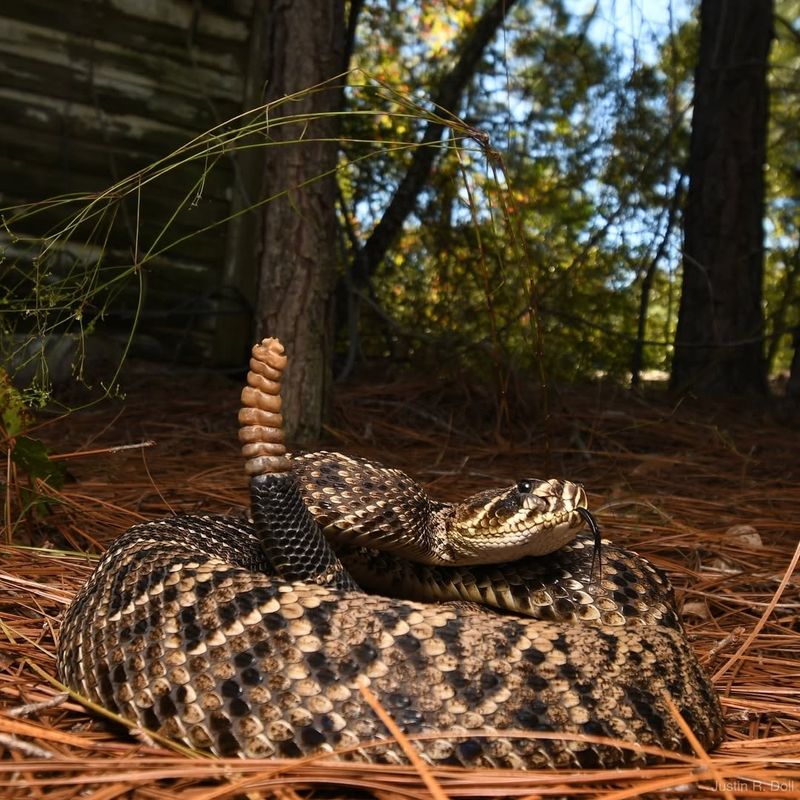
The Eastern Diamondback Rattlesnake is the largest rattlesnake in North Carolina, inhabiting the state’s coastal plains and sandy soils. Known for its impressive size and distinctive diamond patterns, this rattlesnake is a formidable predator. Its habitat includes pine forests and coastal dunes, where it preys on small mammals and birds.
The Eastern Diamondback plays a crucial role in controlling prey populations, contributing to the ecological balance of North Carolina’s diverse ecosystems. While encounters with humans are rare, its presence is a testament to the wild beauty of the state’s natural landscapes, adding to the allure of North Carolina’s wildlife.
31. North Dakota – Prairie Rattlesnake
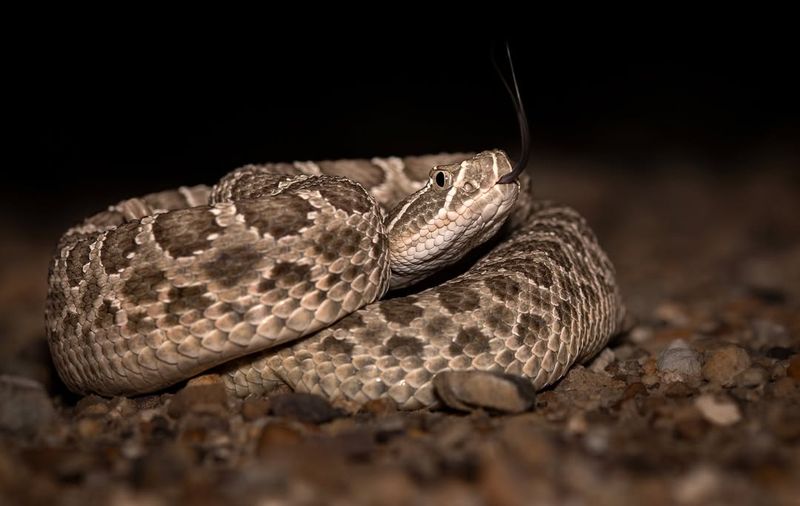
The Prairie Rattlesnake is the largest rattlesnake species in North Dakota, thriving in the state’s expansive grasslands and open plains. This species is well-suited to the wide-open spaces of North Dakota, where it preys on small mammals and birds. The Prairie Rattlesnake’s mottled brown and green coloration provides excellent camouflage against the dry grasses.
In North Dakota, this rattlesnake plays a crucial role in controlling rodent populations, contributing to the ecological balance of the region. While its venom is potent, the Prairie Rattlesnake is generally reclusive and avoids human contact, making it a respected yet cautious resident of North Dakota’s natural landscapes.
32. Ohio – Eastern Massasauga Rattlesnake
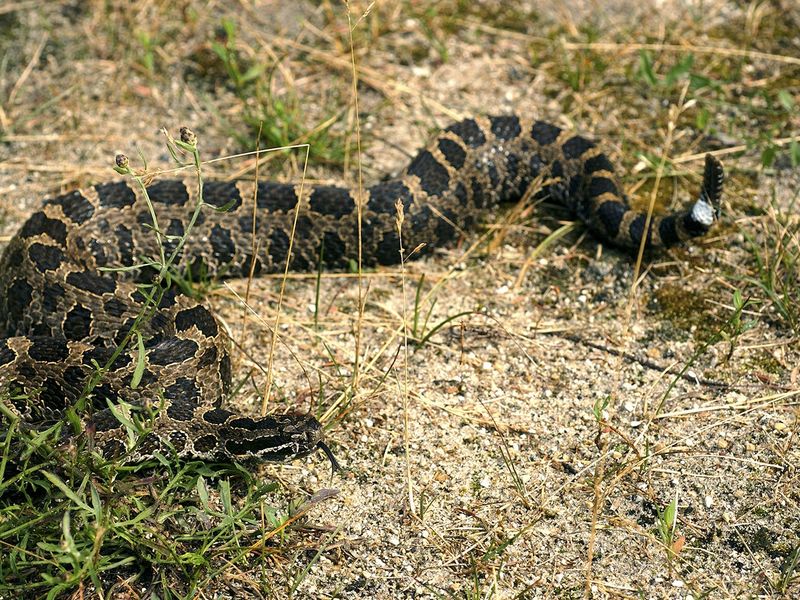
The Eastern Massasauga Rattlesnake is Ohio’s largest rattlesnake, predominantly found in the state’s wetlands and marshy areas. This species is well-camouflaged, with a pattern that blends into the dense vegetation. It primarily feeds on small mammals, contributing to the balance of the ecosystem.
The Eastern Massasauga is a fascinating yet elusive snake, often remaining hidden from human eyes. Its presence in Ohio is a reminder of the state’s rich biodiversity and the importance of wetland conservation. Protecting its habitat ensures the continued survival of this unique rattlesnake, highlighting its ecological significance.
33. Oklahoma – Western Diamondback Rattlesnake
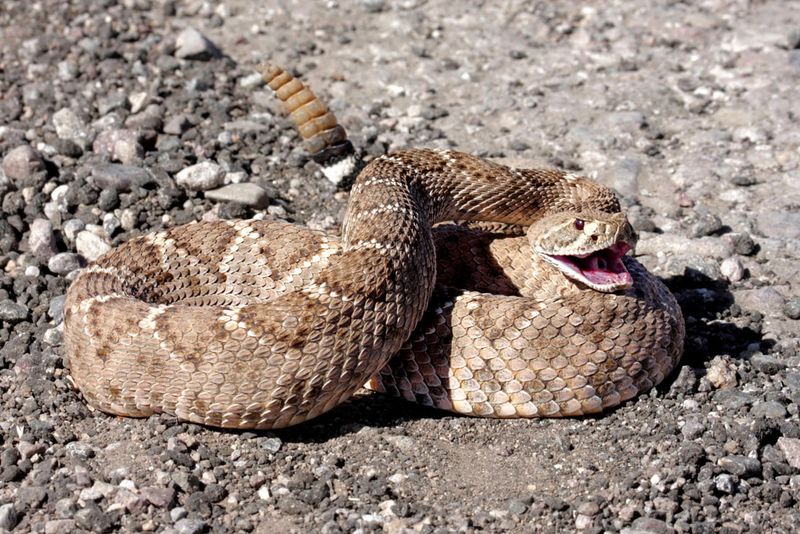
Oklahoma is home to the Western Diamondback Rattlesnake, the state’s largest rattlesnake species. This rattlesnake is well-adapted to the prairies and open fields, where it preys on small mammals and birds. The Western Diamondback’s distinctive diamond patterns and rattling sound are a familiar sight in Oklahoma’s landscapes.
Its presence is crucial for controlling prey populations, contributing to the ecological balance of the region. Although encounters can be unsettling, this rattlesnake is a vital part of Oklahoma’s natural heritage, highlighting the state’s diverse ecosystems. Its adaptability to varied terrains underscores its evolutionary success.
34. Oregon – Western Rattlesnake
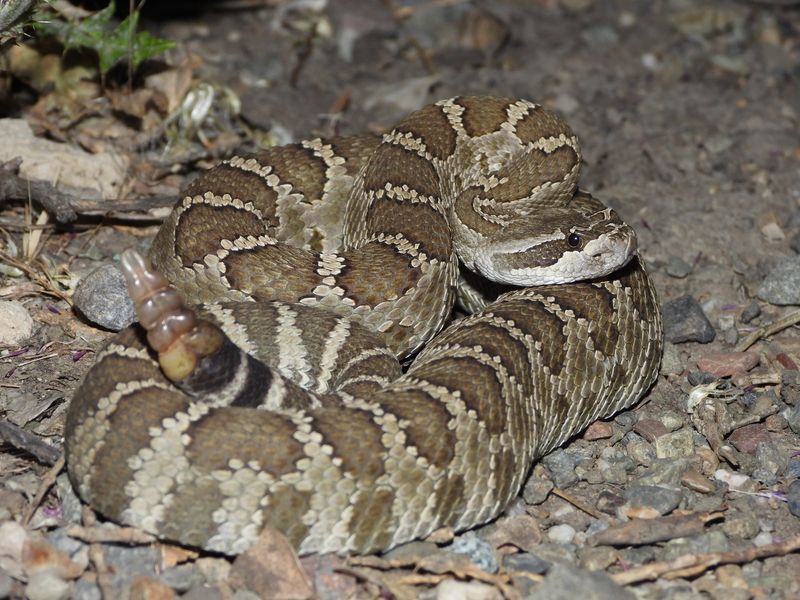
In Oregon, the Western Rattlesnake is the largest species, residing primarily in the high deserts and rocky terrains. This rattlesnake is well-adapted to its environment, using its mottled coloration to blend into the landscape. The Western Rattlesnake primarily feeds on small mammals, playing a crucial role in controlling these populations.
Its presence in Oregon highlights the diversity of the state’s wildlife, contributing to the ecological balance of the region. While encounters are rare, the Western Rattlesnake is a symbol of the wild beauty of Oregon’s natural landscapes, offering a glimpse into the hidden wonders of the high desert.
35. Pennsylvania – Timber Rattlesnake
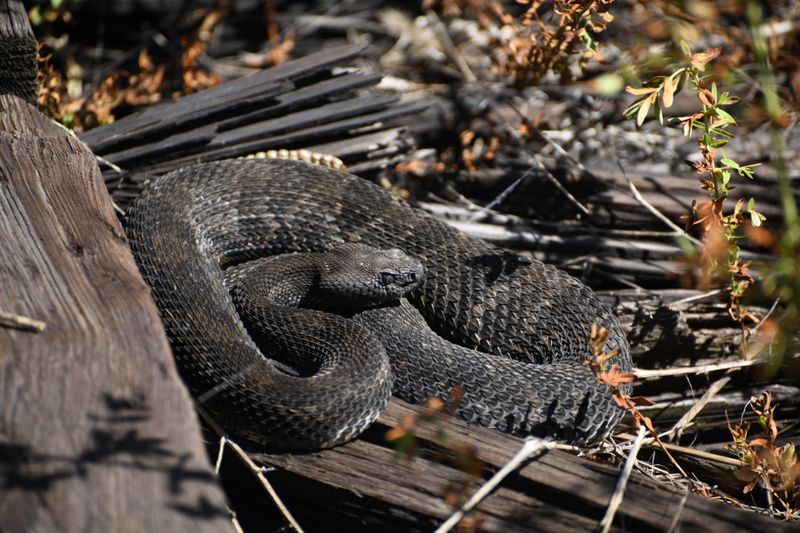
The Timber Rattlesnake is Pennsylvania’s largest rattlesnake species, primarily residing in the Appalachian Mountains and forested areas. This rattlesnake is well-adapted to its environment, using its muted coloration to blend into the forest floor. The Timber Rattlesnake is a skilled predator, preying on small mammals and birds.
Its presence in Pennsylvania is a testament to the state’s rich biodiversity, contributing to the ecological balance by regulating prey populations. While encounters are rare, this rattlesnake is a symbol of the wild beauty of Pennsylvania’s natural landscapes, offering a glimpse into the hidden wonders of the region.
36. South Carolina – Eastern Diamondback Rattlesnake
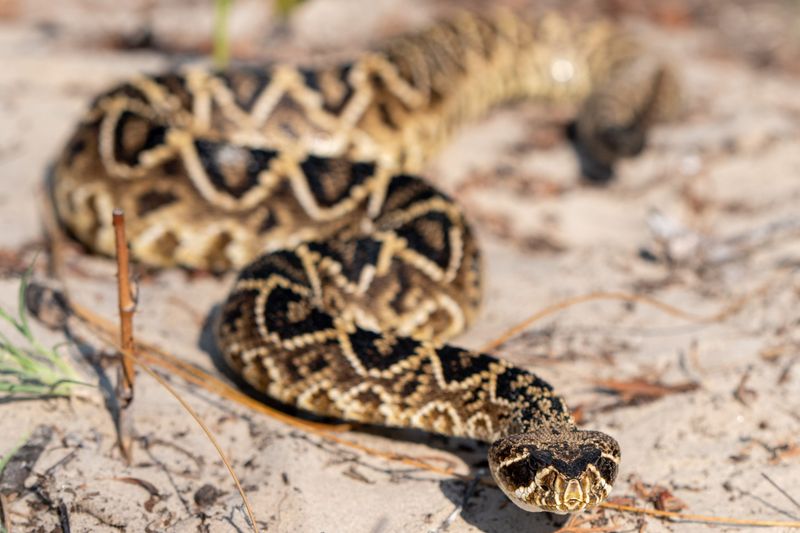
The Eastern Diamondback Rattlesnake is the largest rattlesnake in South Carolina, inhabiting the state’s coastal marshes and sandy soils. Known for its impressive size and distinctive diamond patterns, this rattlesnake is a formidable predator. Its habitat includes tall grass and water channels, where it preys on small mammals and birds.
The Eastern Diamondback plays a crucial role in controlling prey populations, contributing to the ecological balance of South Carolina’s diverse ecosystems. While encounters with humans are rare, its presence is a testament to the wild beauty of the state’s natural landscapes, adding to the allure of South Carolina’s wildlife.
37. South Dakota – Prairie Rattlesnake
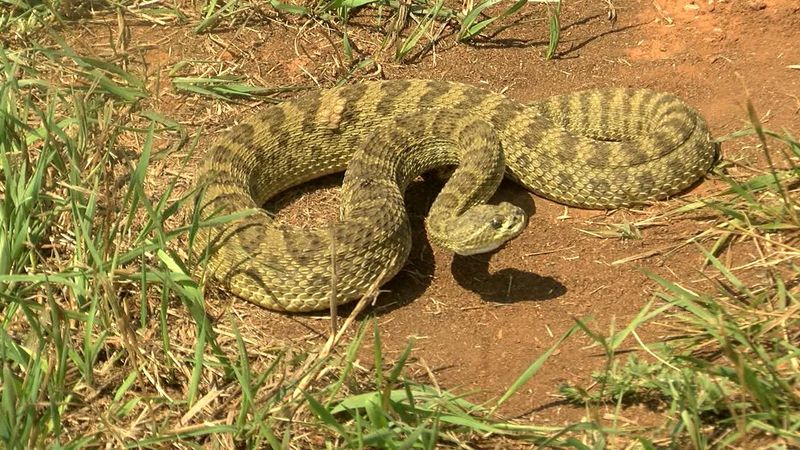
The Prairie Rattlesnake is the largest rattlesnake species in South Dakota, thriving in the state’s expansive grasslands and open plains. This species is well-suited to the wide-open spaces of South Dakota, where it preys on small mammals and birds. The Prairie Rattlesnake’s mottled brown and green coloration provides excellent camouflage against the dry grasses.
In South Dakota, this rattlesnake plays a crucial role in controlling rodent populations, contributing to the ecological balance of the region. While its venom is potent, the Prairie Rattlesnake is generally reclusive and avoids human contact, making it a respected yet cautious resident of South Dakota’s natural landscapes.
38. Tennessee – Timber Rattlesnake
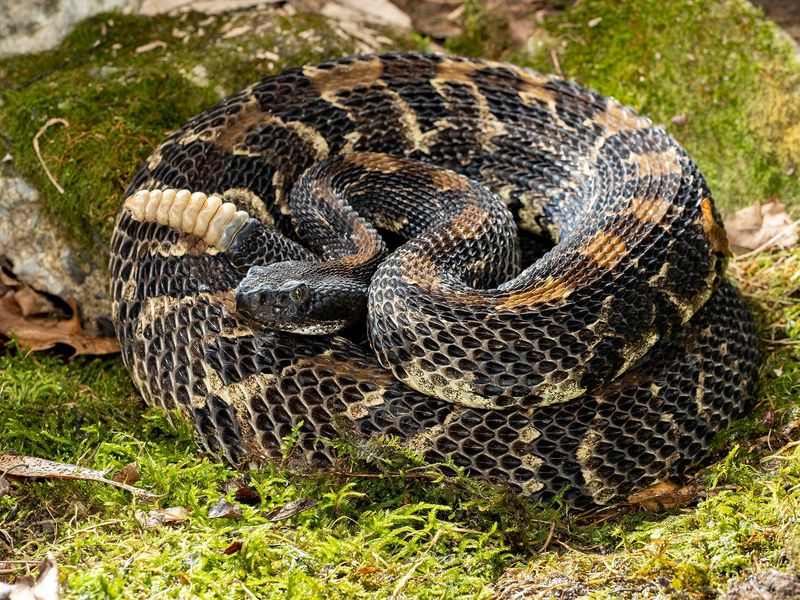
The Timber Rattlesnake is Tennessee’s largest rattlesnake species, residing primarily in the Smoky Mountains and forested areas. This species is well-adapted to the diverse terrains of Tennessee, using its muted coloration to blend into the forest floor.
The Timber Rattlesnake is a skilled predator, preying on small mammals and birds. Its presence in Tennessee is a testament to the state’s rich biodiversity, contributing to the ecological balance by regulating prey populations. While encounters are rare, this rattlesnake is a symbol of the wild beauty of Tennessee’s natural landscapes, offering a glimpse into the hidden wonders of the region.
39. Texas – Western Diamondback Rattlesnake
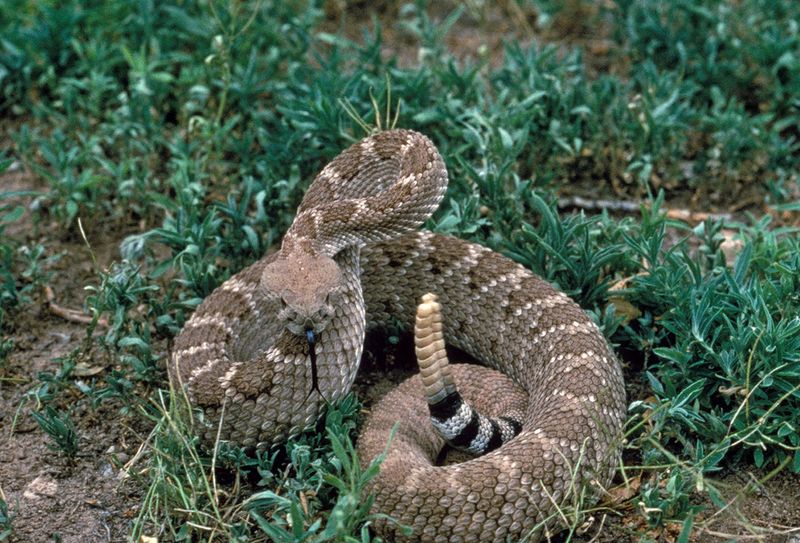
In Texas, the Western Diamondback Rattlesnake is the largest species, thriving in the state’s deserts and varied landscapes. Known for its impressive size and distinctive diamond patterns, this rattlesnake is a formidable predator. It preys on small mammals and birds, using its heat-sensing pits to locate its prey.
The Western Diamondback’s adaptability to different terrains is a testament to its evolutionary success. Its presence in Texas is a reminder of the state’s diverse ecosystems and the intricate balance of nature. Although encounters can be unsettling, this rattlesnake is a vital part of Texas’s natural heritage.
40. Utah – Great Basin Rattlesnake
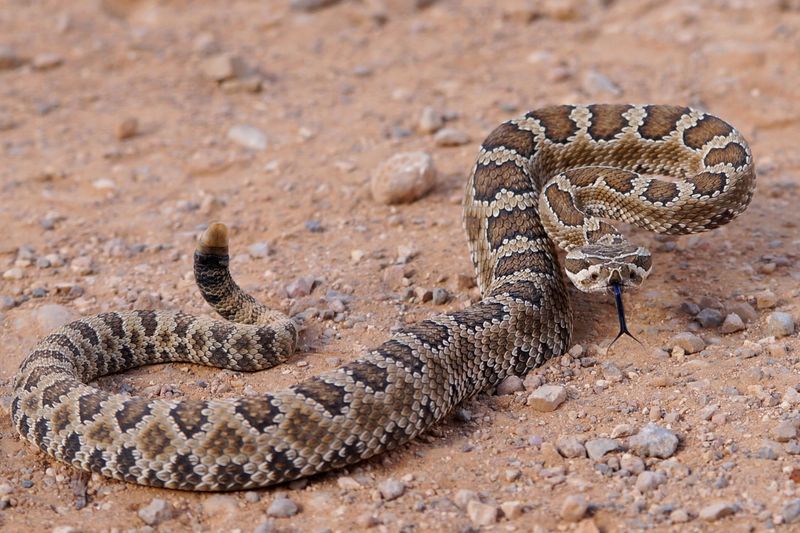
Utah is home to the Great Basin Rattlesnake, the state’s largest rattlesnake species, thriving in the desert landscapes and rocky terrains. Known for its adaptability, this rattlesnake navigates the harsh conditions of Utah’s arid environment with ease.
The Great Basin Rattlesnake primarily preys on small mammals, playing a crucial role in controlling these populations. Its presence in Utah highlights the diversity of the state’s wildlife, contributing to the ecological balance of the region. While encounters are rare, the Great Basin Rattlesnake is a symbol of the wild beauty of Utah’s natural landscapes, offering a glimpse into the hidden wonders of the desert.
41. Vermont – Timber Rattlesnake
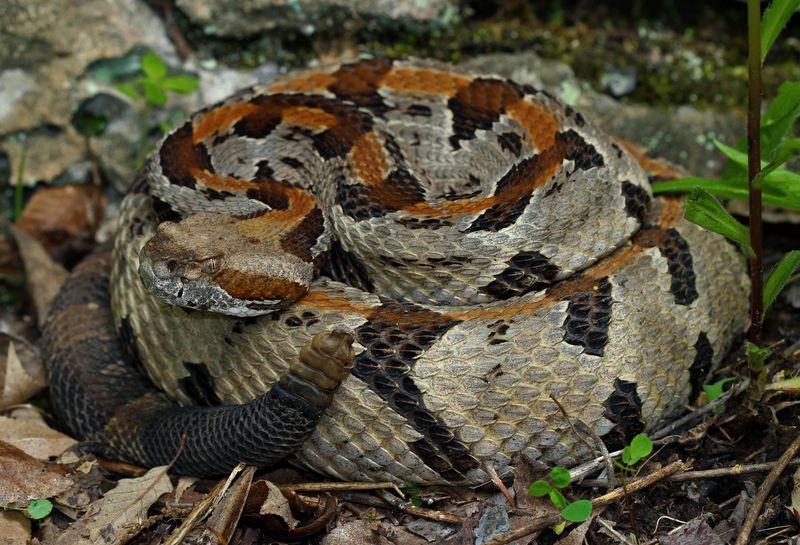
The Timber Rattlesnake is Vermont’s largest rattlesnake species, residing primarily in the Green Mountains and forested areas. This rattlesnake is well-adapted to its environment, using its muted coloration to blend into the forest floor. The Timber Rattlesnake is a skilled predator, preying on small mammals and birds.
Its presence in Vermont is a testament to the state’s rich biodiversity, contributing to the ecological balance by regulating prey populations. While encounters are rare, this rattlesnake is a symbol of the wild beauty of Vermont’s natural landscapes, offering a glimpse into the hidden wonders of the region.
42. Virginia – Timber Rattlesnake
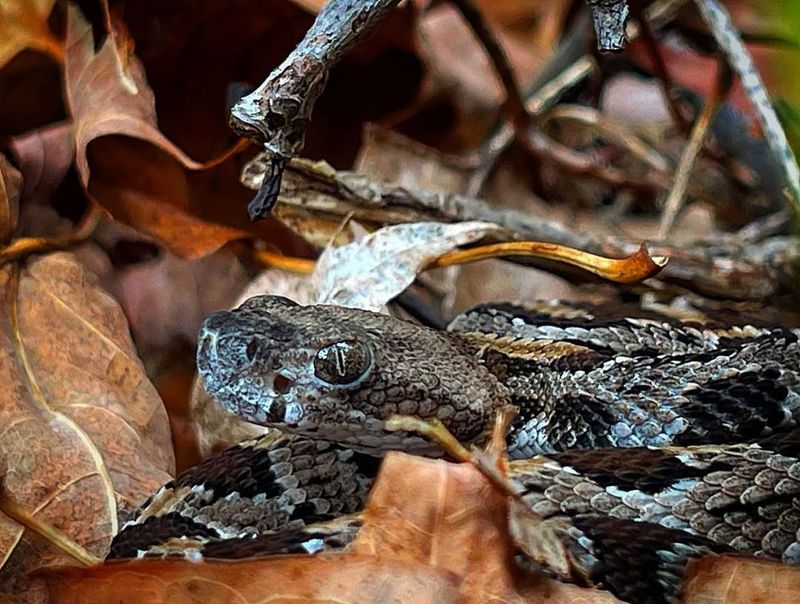
In Virginia, the Timber Rattlesnake is the largest species, residing primarily in the Appalachian Mountains and forested areas. This rattlesnake is well-adapted to its environment, using its muted coloration to blend into the forest floor.
The Timber Rattlesnake is a skilled predator, preying on small mammals and birds. Its presence in Virginia is a testament to the state’s rich biodiversity, contributing to the ecological balance by regulating prey populations. While encounters are rare, this rattlesnake is a symbol of the wild beauty of Virginia’s natural landscapes, offering a glimpse into the hidden wonders of the region.
43. Washington – Western Rattlesnake
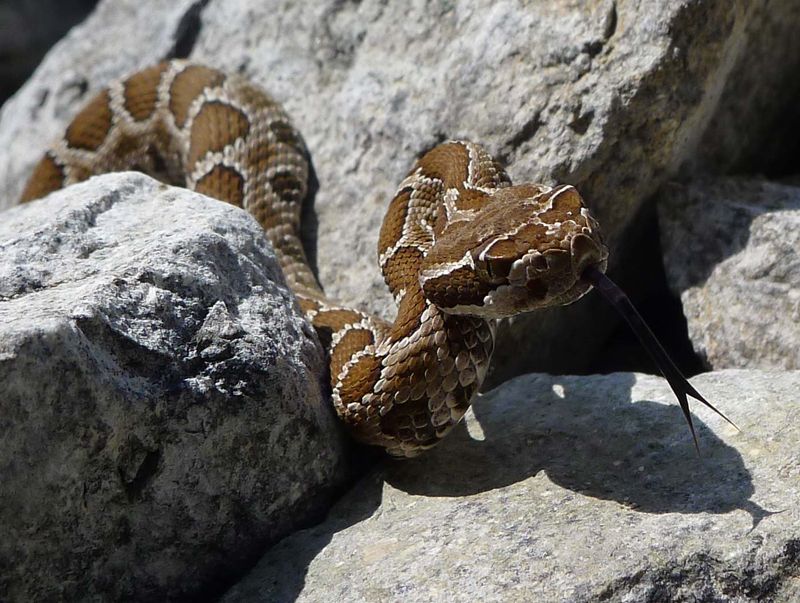
The Western Rattlesnake is Washington’s largest rattlesnake species, thriving in the state’s sagebrush plains and rocky terrains. Known for its adaptability, this rattlesnake navigates the varied landscapes of Washington with ease. The Western Rattlesnake primarily preys on small mammals, playing a crucial role in controlling these populations.
Its presence in Washington highlights the diversity of the state’s wildlife, contributing to the ecological balance of the region. While encounters are rare, the Western Rattlesnake is a symbol of the wild beauty of Washington’s natural landscapes, offering a glimpse into the hidden wonders of the sagebrush plains.
44. West Virginia – Timber Rattlesnake
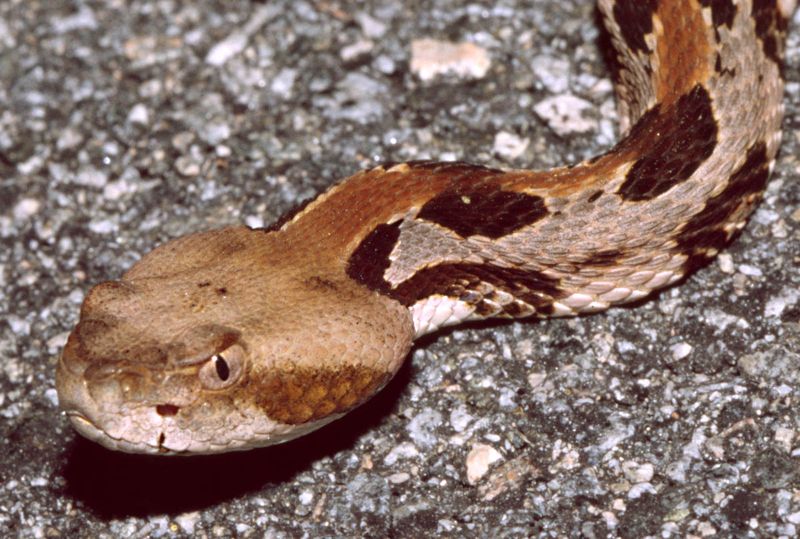
In West Virginia, the Timber Rattlesnake is the largest species, residing primarily in the Allegheny Mountains and forested areas. This rattlesnake is well-adapted to its environment, using its muted coloration to blend into the forest floor.
The Timber Rattlesnake is a skilled predator, preying on small mammals and birds. Its presence in West Virginia is a testament to the state’s rich biodiversity, contributing to the ecological balance by regulating prey populations. While encounters are rare, this rattlesnake is a symbol of the wild beauty of West Virginia’s natural landscapes, offering a glimpse into the hidden wonders of the region.
45. Wisconsin – Timber Rattlesnake
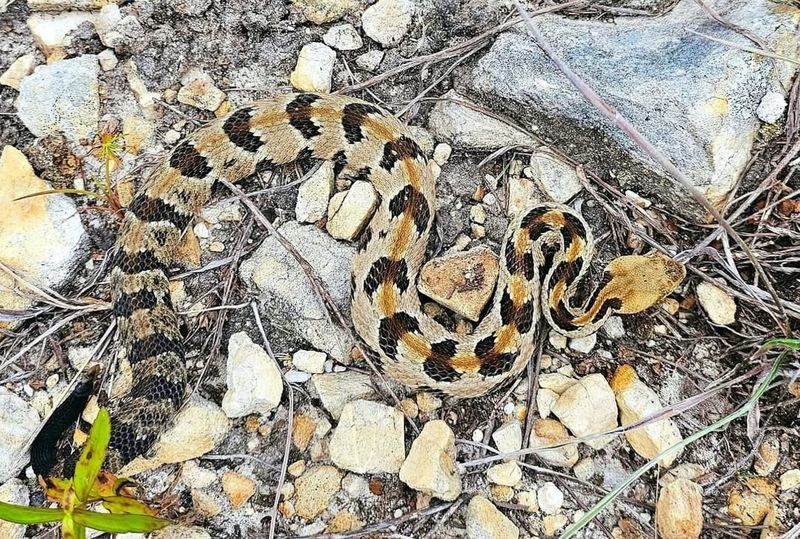
The Timber Rattlesnake is Wisconsin’s largest rattlesnake species, residing primarily in the state’s driftless area and forested regions. This rattlesnake is well-adapted to its environment, using its muted coloration to blend into the forest floor. The Timber Rattlesnake is a skilled predator, preying on small mammals and birds.
Its presence in Wisconsin is a testament to the state’s rich biodiversity, contributing to the ecological balance by regulating prey populations. While encounters are rare, this rattlesnake is a symbol of the wild beauty of Wisconsin’s natural landscapes, offering a glimpse into the hidden wonders of the region.
46. Wyoming – Prairie Rattlesnake
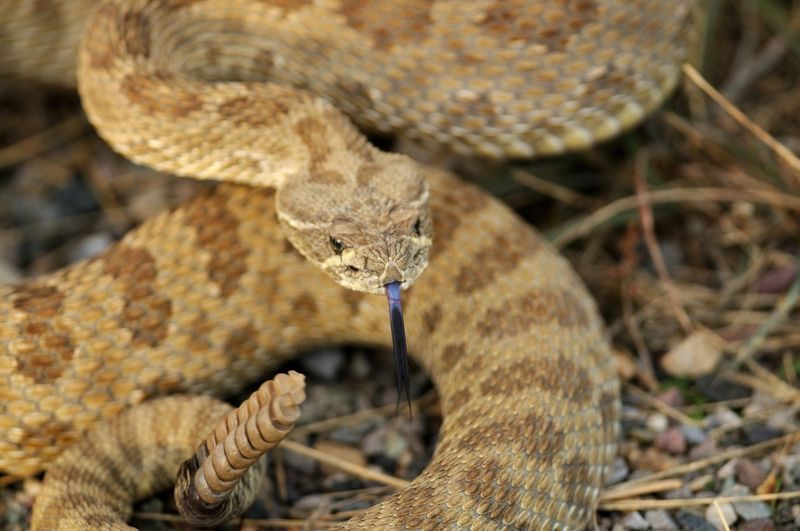
The Prairie Rattlesnake is the largest rattlesnake species in Wyoming, thriving in the state’s expansive grasslands and open plains. This species is well-suited to the wide-open spaces of Wyoming, where it preys on small mammals and birds. The Prairie Rattlesnake’s mottled brown and green coloration provides excellent camouflage against the dry grasses.
In Wyoming, this rattlesnake plays a crucial role in controlling rodent populations, contributing to the ecological balance of the region. While its venom is potent, the Prairie Rattlesnake is generally reclusive and avoids human contact, making it a respected yet cautious resident of Wyoming’s natural landscapes.


